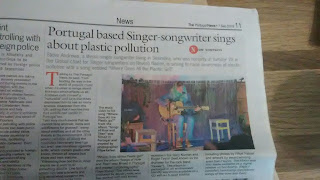The European Rabbit is in Danger!
European Rabbit (Photo: Steve Andrews)
There’s a strip of woodland and scrub five minutes from where I live, and nearly every day I connect with nature by walking through it. Although it has busy roads separating it from larger sections of the Portuguese countryside, and is near to houses, this parcel of land has a wonderful selection of wildflowers and of wildlife, including butterflies, birds, reptiles, and a colony of European Rabbits. At least, there was a rabbit warren there until recently. I have been watching an example of habitat destruction on my doorstep! A team of workmen, bulldozers and JCBs have ruined where the rabbits live, transforming it into something neat and tidy, a place that shows the human view of how things should be. It is no longer a world and a home for European Rabbits, at least I have not seen any since the men were there. Of course, I never could get close to any of the rabbits I would see on happier days, but just knowing they were there gave me a good feeling. A sense of contentment that all was well in a parcel of countryside, right by where I live. The sandy soil in this location is ideal for a rabbit to burrow in and trees and bushes, brambles and other vegetation, provide a place to hide away from walkers with dogs. The European Rabbit has many threats to its life to watch out for: natural predators and humans who hunt. Rabbit hunting is a tradition in many places. Men with guns and dogs get pleasure from this. These hunters would argue that it is a traditional way of providing food for their families and meat for the market. It is a serious threat to rabbit populations though, especially coupled with the devastating effects of the deadly Myxomatosis plague that was unleashed many years ago. The Rabbit Calcivirus has also contributed to the decline of this once very common mammal, which the International Union For Conservation Of Nature (IUCN) in 2018 classified as Endangered for the animal’s current Conservation Status. In Portugal, the Iberian Lynx, a species that is struggling for survival as well, depends on rabbit populations, because these once common mammals are its main prey. Efforts to help the Lynx return are doomed to failure unless rabbit numbers can be increased a lot as well. One form of life depends on another, as links in a food chain, and parts of the web of life.
 |
| After the work was done! (Photo: Steve Andrews) |
 |
| They cleaned this part up too! (Photo: Steve Andrews) |























